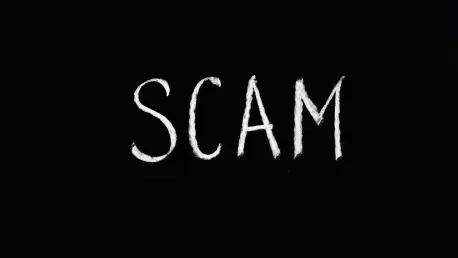In an era where digital deception is becoming increasingly sophisticated, the rise of deepfake technology has opened a troubling new frontier for fraudsters, with high-profile celebrities becoming prime targets for elaborate scams. A striking example unfolded recently when Brazilian authorities uncovered a scheme involving supermodel Gisele Bündchen, where scammers used AI-generated videos to falsely endorse “free” anti-wrinkle creams and suitcases. These deceptive ads tricked countless victims into paying shipping fees for products that never arrived, resulting in a staggering $3.9 million haul for the perpetrators. This case is not just a singular incident but a glaring signal of a broader, more insidious trend in digital fraud. As technology advances, the ability to create convincing fake endorsements is no longer confined to tech experts, posing significant risks to both public trust and individual finances. The implications of such scams ripple far beyond a single celebrity, highlighting an urgent need to address this growing menace in the online world.
The Mechanics of Deepfake Fraud
Crafting Convincing Deceptions
The ingenuity behind deepfake scams lies in their ability to replicate a celebrity’s likeness with chilling accuracy, often leaving even the most discerning viewers unaware of the fraud. Scammers harness accessible AI tools to overlay a star’s face and voice onto fabricated content, creating endorsements for products that don’t exist. In the case involving Gisele Bündchen, fraudsters promoted fictitious anti-wrinkle creams through videos that appeared authentic, capitalizing on her global recognition to build trust. These schemes typically direct victims to counterfeit websites via social media ads or phishing links, where personal and financial details are harvested under the guise of shipping fees. The financial toll is immense, with millions lost to such ploys annually. What makes this particularly alarming is the democratization of deepfake tools, which no longer require advanced technical skills, enabling a wider pool of criminals to exploit unsuspecting individuals with startling ease.
Targeting High-Profile Figures
Beyond a single instance, the scope of deepfake fraud extends to a roster of well-known personalities, amplifying the scale of deception. Celebrities like Tom Hanks, Gordon Ramsay, and Taylor Swift have also been impersonated in scams pushing everything from miracle cures to high-end cookware brands like HexClad and Le Creuset. These fabricated endorsements prey on fans’ admiration and trust, often leading to significant financial losses when victims pay for nonexistent goods. The psychological impact is equally damaging, as the betrayal of trust in familiar faces erodes confidence in digital content. Scammers strategically choose prominent figures whose endorsements carry weight, knowing that a recognizable name can lower defenses. This trend underscores a critical vulnerability in the digital age, where fame becomes a double-edged sword, exploited to deceive rather than inspire, leaving both celebrities and their followers grappling with the fallout of such sophisticated fraud.
Challenges and Responses to Digital Deception
The Role of Social Media Platforms
Social media giants, particularly Meta’s Instagram and Facebook, play a pivotal role in the proliferation of deepfake scams through paid advertisements that often slip through detection systems. Despite claims of employing AI-driven tools and trained review teams to flag fraudulent content, the scale of the issue remains daunting. A study by the Tech Transparency Project found that over 150,000 deepfake ads from hundreds of scam advertisers generated $49 million in revenue for Meta, spotlighting a glaring gap in oversight. Critics argue that algorithmic targeting, which directs ads to vulnerable demographics, implicates platforms as active facilitators rather than passive hosts, challenging protections under Section 230 of the U.S. Communications Decency Act. In contrast, Brazil’s stricter legal stance holds platforms accountable for illegal content, reflecting a global disparity in regulation. This inconsistency highlights the urgent need for robust mechanisms to curb the spread of deceptive ads online.
Navigating Legal and Consumer Protections
Addressing the legal landscape reveals a patchwork of responses that struggle to keep pace with technological advancements in deepfake fraud. While some regions, like Brazil, impose stringent liability on social media platforms for failing to curb illegal third-party content, the U.S. maintains a more lenient approach, often shielding companies from responsibility. This discrepancy creates loopholes that scammers exploit, operating across jurisdictions with varying levels of enforcement. On the consumer front, practical steps have emerged as a frontline defense, such as using deepfake detection apps or verifying endorsements directly on official celebrity and product websites. For example, a quick check on Taylor Swift’s or Le Creuset’s verified pages would have debunked fraudulent giveaways. These measures, though helpful, place the burden on individuals to navigate a complex digital minefield, underscoring the slow institutional response to a rapidly evolving threat and the need for more cohesive global strategies.
Looking Back at Lessons Learned
Reflecting on the trajectory of deepfake scams, it has become evident that their impact reverberates through both financial losses and eroded trust in digital spaces. Cases like the one involving Gisele Bündchen, which netted scammers $3.9 million, stand as stark reminders of the potency of AI-driven fraud when paired with celebrity influence. Social media platforms face intense scrutiny for their role in amplifying these deceptions, often prioritizing revenue over rigorous content moderation. Legal frameworks show varying degrees of effectiveness, with stricter measures in some regions offering a glimpse of potential solutions. Consumer vigilance proves crucial, as tools and verification practices help mitigate individual risks. Moving forward, a collaborative push involving tighter regulations, advanced detection technologies, and public education campaigns appears essential to outpace the cunning of fraudsters. These steps, if prioritized, promise a safer digital landscape where trust can be rebuilt and protected against the ever-evolving tactics of digital deception.









